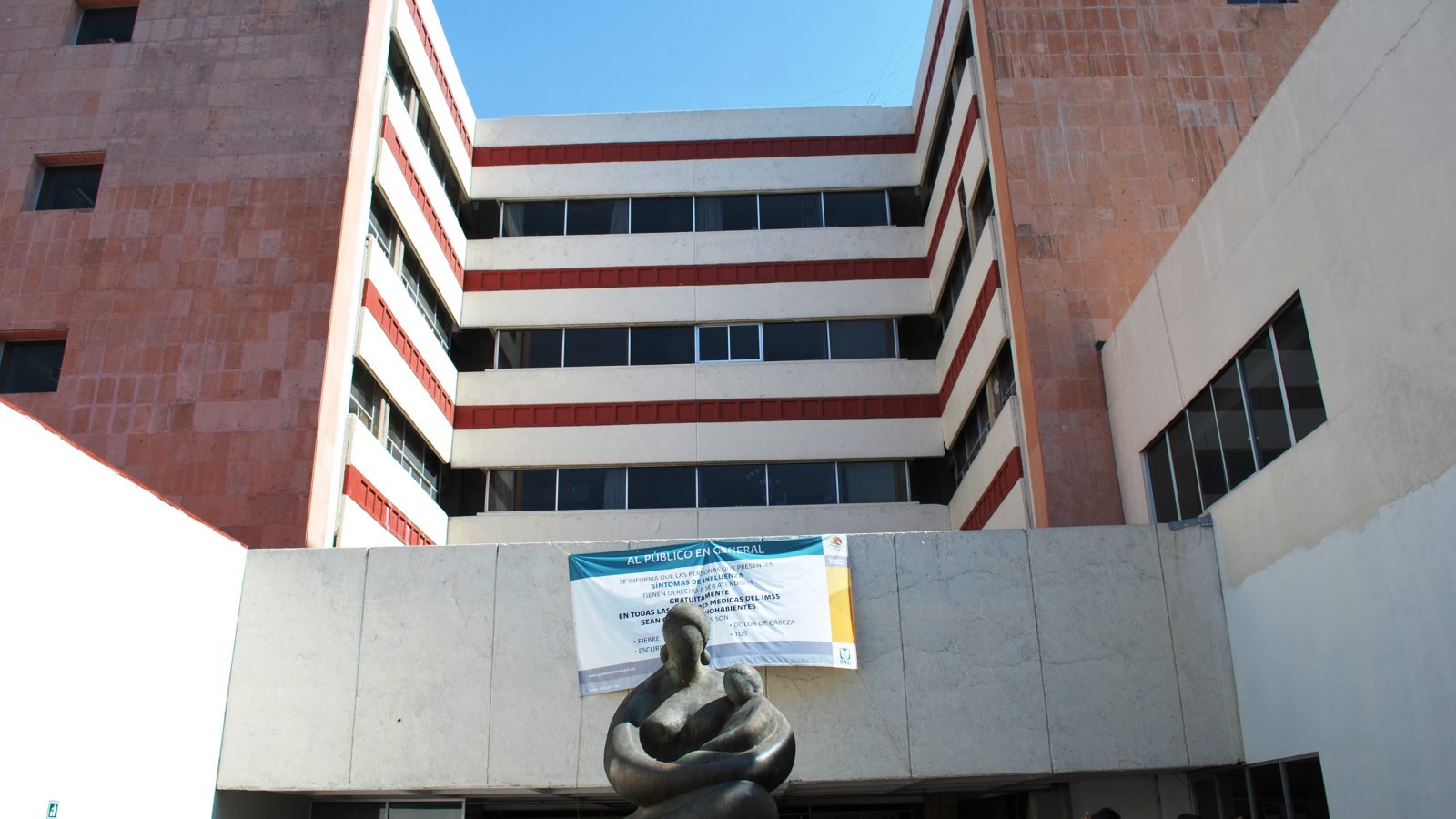This article was originally published in Georgetown University’s Georgetown Journal of International Affairs, on March 18, 2021. Thank you to the publishers and the author for their kind authorization to re-publish.
India’s contribution to Latin America’s healthcare sector goes beyond its traditional role as the ‘pharmacy of the world,’ given that the region lies in a sweet spot somewhere between the highly regulated and competitive markets of the United States and Europe and the less-regulated markets of Africa. Still, there remains much scope for the twenty-five Indian companies with a physical presence in Latin America to consolidate and deepen their presence in the region. Doing so would allow India to become a more permanent healthcare partner for the region.
On January 22, less than a week after India began its own Covid-19 vaccination drive at home, the Serum Institute of India shipped two million doses of the Covidshield vaccine from Mumbai to Sao Paulo, Brazil, after urgent pleas from the South American nation. Another Indian company, Bharat Biotech, reached an agreement to supply Brazil with twelve million doses of its Covid-19 vaccine for the remainder of 2021—the first such international agreement signed for the company’s Covaxin vaccine. In February, India shipped 870,000 Covid-19 vaccine doses to Mexico and another 580,000 doses to Argentina. About a half-dozen more Latin American countries have been in constant touch with India to secure a supply of Covid-19 vaccines at affordable costs. This rapport owes partially to India’s contribution in global health supply chains and to its epithet as the ‘pharmacy of the world,’ accounting for more than twenty percent of the world’s generic medicine supply and sixty-two percent of the world’s vaccine supply.
Indian pharmaceutical companies have managed to capture such a large share of the global pharmaceutical market through a combination of affordability and high quality. After all, India has nearly as many United States Food and Drug Administration (FDA) manufacturing facility registrations (327) as the United States (348); moreover, India’s active pharmaceutical ingredients (APIs) registrations (183) nearly equal those of the United States (88) and China (101) combined. This consistency in quality has given India an edge over China when it comes to providing the world with generic, affordable, and high-quality medicine, especially in highly regulated markets like Brazil and Mexico. Throughout the 21st century, India’s exports of finished pharmaceutical formulations to Latin America have surpassed that of China’s. Yet there is still significant room for Indian pharmaceutical companies’ expansion into the Latin American market. A clear policy from the Indian government to prioritize the Latin American region, as well as a reciprocation from Latin American governments to embrace India’s ability to help lower the region’s healthcare expenses, could galvanize India’s place as a fundamental healthcare partner for the region.
Besides India’s global appeal as a healthcare supplier, the Latin American region is particularly attractive for Indian companies, creating a synergy between India and Latin America that has grown steadily over the past two decades. The region lies in a sweet spot somewhere between the highly regulated and competitive markets of the United States and Europe, and the less-regulated markets of Africa. The level of foreign competition in Latin America’s pharmaceutical space is less than what you may find in Africa, but the profit margins and return on investment can be far higher. This is owed to Latin America’s higher purchasing power capacity; the region’s average GDP per capita is nearly six times more than Africa’s. Latin America also has a rapidly growing healthcare industry, bolstered by regular foreign investment and government funding, especially in Brazil, Mexico, and Argentina.
Moreover, Latin America is one of the world’s most important pharmaceutical markets. The Latin American pharmaceutical market is forecasted to grow at nine percent per year through 2028 and is already more than twice the size of the African and Middle Eastern markets combined. Brazil’s pharma market alone is bigger than that of the United Kingdom, Italy, Canada, and Spain, and is expected to surpass France to become the world’s fifth-largest by 2023. As a result, many Indian pharmaceutical companies place a greater emphasis on Latin America than they do on Africa or Southeast Asia.
The Latin American region, too, has been eager to reap the mutual benefits. India adds much value to the healthcare industry by providing a lower-cost alternative to US and European firms, bringing down the costs of public healthcare in the region.
In 2019, India exported $1.3 billion in healthcare products to Latin America, including finished pharmaceutical formulations, APIs, and vaccines; Brazil alone made up about two-thirds of these exports. India, in turn, makes up about two-thirds of all imported generic medicines in Brazil and is also the largest supplier of generic medicines to Mexico. India is also amongst the largest supplier of oncology products, HIV drugs, and vaccines in Latin America.
India’s footprint in Latin American healthcare
In addition to exporting pharmaceutical products to Latin America, the region has also become an important investment destination for Indian companies as a result of systematic and sustainable growth. The twenty-five Indian companies that currently have a physical presence in the region, either with a local manufacturing unit or a representative office to boost sales, are in it for the long run. Most of them entered the region tempted by the sheer size of the market, but now that mentality has evolved. Indian pharmaceutical companies in Latin America today have a more nuanced understanding of regional and domestic markets and are more prepared to offer customized solutions.
Indeed, it is telling that Indian pharmaceutical companies have fourteen manufacturing plants in the Latin American region, nearly all of which are in Brazil and Mexico, the so-called ‘pharmerging’ markets, and sales offices in more than a dozen countries in the region. A notable trend is that the large majority of these manufacturing plants were the result of acquisitions, rather than greenfield investments. This trend indicates a preference for ‘inorganic’ growth, a quicker alternative to expand in unexplored markets. The large number of sales offices and subsidiaries, sixty-five in total, highlights the enthusiasm with which Indian pharma companies view the Latin American region and its potential for growth. Examples of certain companies like Torrent Pharma, which generates roughly $100 million revenue from its sales office in Brazil through 10 brands registered in the country, show that it is not a prerequisite to set up a manufacturing plant in the region to succeed in this market. However, in the long-term, it will become increasingly relevant for Indian healthcare companies to invest and manufacture locally in the region if they are to compete with others who already have that advantage.
The region’s governments and regulators, too, have taken more of an interest in India recently; today, India is the destination with the greatest number of manufacturing site approvals by Brazil’s drug regulator, the Agência Nacional de Vigilância Sanitária (ANVISA). Latin American drug regulators have reciprocated by approving the registrations of dozens of Indian companies at a decent pace, recognizing their positive contribution in reducing the region’s high healthcare costs. Today, in addition to generics, APIs, and vaccines, India is beginning to export a steady but increasing supply of high-value drugs and biosimilars.
TABLE 1: Indian pharma companies in Latin America
| Company Name | Year of entry | Manufacturing Unit | Subsidiaries and Offices |
| Aurobindo | 2001 | 1 (Brazil) | 3 (Brazil, Mexico, Colombia) |
| Sun Pharma | 2002 | 2 (Brazil; Mexico) | 6 (Brazil, Mexico, Peru, Venezuela) |
| Dr. Reddy’s | 2005 | 1 (Mexico) | 5 (Mexico, Colombia, Chile, Venezuela, Brazil) |
| Lupin | 2010 | 2 (Mexico; Brazil) | 2 (Mexico, Brazil) |
| Torrent Pharma | 2001 | 2 (Brazil, Mexico) | |
| Zydus Cadila | 2004 | 1 (Brazil) | 3 (Brazil, Mexico) |
| Glenmark | 2005 | 1 (Argentina) | 9 (Argentina, Brazil, Peru, Dominican Republic, Uruguay, Mexico, Colombia, Ecuador, Venezuela) |
| Strides | 2007 | 1 (Mexico) | |
| IPCA | 2008 | 1 (Mexico) | |
| ACG Capsules | 2013 | 2 (Brazil) | 3 (Brazil, Argentina) |
| Unichem | 2002 | 1 (Brazil) | |
| Intas/Accord | 2009 | 2 (Mexico; Brazil) | 3 (Mexico, Brazil, Peru) |
| Emcure | 2011 | 3 (Brazil, Peru, Mexico) | |
| Biocon | 2010 | 2 (Brazil, Mexico) | |
| Uquifa | 2011 | 1 (Mexico) | 1 (Mexico) |
| Hetero | 2011 | 1 (Mexico) | 3 (Mexico, Brazil, Colombia) |
| Cipla | 2013 | 2 (Brazil, Colombia) | |
| Natco Pharma | 2011 | 1 (Brazil) | |
| Caplin Point | 2002 | 6 (Colombia, El Salvador, Guatemala, Ecuador, Honduras, Nicaragua) | |
| Micro Labs | 2005 | 2 (Mexico, Dominican Republic) | |
| Himalaya Drug Company | 2009 | 1 (Peru + USA office) | |
| TIL Healthcare | 2016 | 1 (Peru) | |
| Macleods Pharmaceuticals | 2013 | 1 (Mexico) | |
| Aculife/Nirlife | 2011 | 2 (Mexico, Brazil) | |
| HiGlance | 2009 | 1 (Peru) | |
| Total: 25 | 14 | 65 |
Still, India’s presence in local manufacturing in Latin America’s pharma space has much room for expansion, from the current twenty-five companies in the region to at least fifty in the next decade or so. After all, there is an argument to be made for strength in numbers, and a larger congregation of Indian pharma companies in the region could act in unison to compete against Chinese and European drug-makers, especially if they want to expand more into higher-value segments. Already, six Indian pharmaceutical companies are already attempting to form a cluster for production and logistics in Mexico.
Recommendations
India’s presence in Latin America’s health sector is marked by a host of private companies that often compete with each other in the region, leaving little room for any sort of lasting collaboration; furthermore, there is little support from the Government of India since the Indian state does not have a specific foreign policy catering to Latin America; there is nothing along the lines of India’s ‘Look East’ or ‘Neighbourhood First’ policy. Still, India’s pharmaceutical companies have gradually earned the trust of the Latin American people over the past two decades, and are now perceived to be a vital supplier of high-quality, affordable APIs, vaccines, and generic drugs in the region. To cement their relationship with Latin American countries over the long-term, the next step for Indian pharmaceutical companies would be to enter the branded and retail segments in the region, selling directly to Latin American consumers and familiarizing them with the advantages of high-quality, affordable medicine manufactured by Indian drug-makers.
There is also potential for increased government-to-government collaboration, including with intra-governmental entities like the Pan American Health Organization, and public-private-partnerships, such as those that cater to Brazil’s Unique Health System (Sistema Único de Saúde). Some inter-governmental partnerships between India and Latin America have already seen success: Brazil partnered with India’s Aurobindo Pharma Limited to produce a generic version of an HIV/AIDS drug that saved the country $237 million through 2012. Such proactive collaboration and partnerships between the governments and private sector in India and Latin America could help India become a more permanent healthcare partner for the region.
Picture credits: Thelmadatter (via Creative Commons)






Be First to Comment